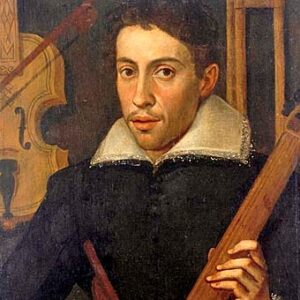Antonio Stradivari, an Italian violin maker, is credited for revolutionizing the design of violins, which are today prized for their incredible tonal quality. Although there are no reliable dates for his birth, he was born into a noble family. He began his apprenticeship with Nicolo Amati, a famous violin maker, when he was quite young. Although there is no proof, many believe Antonio began his career as a woodworker and was employed by legendary instrument maker Amati to adorn some of his works. Antonio then started his own label and began producing instruments, but he stayed with Amati until he established a solid foothold in Cremona. Antonio’s early violins were smaller in size than Amati’s, but he eventually experimented with design and tone and invented the ‘Long Strad,’ or long violin. Stradivari’s effect was not restricted to Cremonese violins; it had a global impact as well. Most current instruments are built on the foundations of his designs. Antonio never shared his secrets of craftsmanship to anybody, but it was most likely the perfect balance of materials, design, and artistry that resulted in such exquisite instruments that are still admired today. Continue reading to learn more about this famed instrument maker’s life and work.
Childhood and Adolescence
There are no official records of Antonio’s birth, although evidence suggests that he was born in Cremona in 1644. Anna Moroni and Alessandro Stradivari were his parents. Many of his early instruments mirrored Nicolo Amati’s style, therefore he may have began his apprenticeship with him. Other accounts claim that he began his career as a woodworker and focused mostly on Amati’s violin designs.
Career of Antonio Stradivari
Antonio began making decent instruments under the tutelage of Amati in 1660, when he was only 16 years old. He stayed with Amati for a few more years until he established himself in the instrument-making business. He made a lot of stringed instruments in the beginning, like mandolins, guitars, and lutes. The basic design was similar to Amati’s, but Antonio began experimenting with design and tone.
His experiments in the 1680s resulted in solid violins with a variety of finishes. Gradually, he began to depart from his mentor’s approach. The sound of these violins was so loud that they quickly became popular not just in Cremona but across the world.
Antonio consolidated his position as Cremona’s best violin maker after Amati’s death in 1684. He dabbled in the complexities of instrument-making, and his precision improved as seen by his 1690 innovation, the ‘Tuscan violin,’ which required skill and accuracy to install the purfling quickly. During this time, he began to experiment, and the outcome was the creation of ‘Long strads,’ or long pattern violins, which are longer than traditional violins. The instrument’s richer, deeper sound made it extremely popular among artists.
The years 1700 to 1720 are considered to be the most prolific in his career. He abandoned the long violin in favor of instruments that merged his earlier designs’ rich tone with the lovely notes of a conventional Cremonese violin. The maple was usually used, and the orange-brown finish became his signature.
This period’s inventions became well-known as distinct entities. Antonio never sold any of his paintings, including ‘Alard,’ ‘Betts,’ and ‘Messiah.’ Antonio also experimented with the cello, producing numerous smaller cellos between 1707 and 1710 in response to the increased demand for smaller instruments.
His worsening health, particularly bad eyesight, began to hamper his job by 1720, and his sons, as well as another employee, assisted him during this time. The inscription ‘under the discipline of Antonio Stradivari’ was seen on several of the instruments made during this period.
Major Projects of Antonio Stradivari
The prominent instrument maker influenced the Cremonense violin manufacturing school greatly, and his style defined violin making for the next three centuries around the world. Stradivari is credited with designing the ‘long strad violin,’ which other luthiers like as Daniel Parker and Jean Baptiste Vuillaume drew inspiration from.
Personal History and Legacy
Antonio had two marriages during his lifespan. He married Francesca Feraboschi in the year 1667. They had six children together. Two of his kids from this marriage went on to follow in their father’s footsteps as violin makers.
Francesca died in 1698, and Antonio married Antonia Maria Zambelli the following year. This couple had five children, although none of them worked in the instrument-making industry.
Antonio died at the age of 93 on December 18, 1737. The accomplished luthier and his second wife were buried in the ‘Chapel of the Rosary’ of the ‘Church of San Domenico’, which is located across the street. Antonio has had a significant influence on Cremona’s instrument production, bringing his own style with him. International makers like Barak Norman, one of Britain’s finest instrument makers, followed his unique style. Daniel Parker, who was strongly influenced by Antonio’s work, made violins in the 1720s that are currently sold at auction for a high price. Jean Baptiste Vuillaume also imitated Antonio’s designs.
Estimated Net Worth
The estimated net worth of Antonio Stradivari is not available.
Trivia
The violins of Antonio Stradivari are among the most sought-after instruments among artists. A Stradivari violin was sold for $1.3 million at an auction in New York City in the year 2000.
There have been rumors that the Stradivari violin in the Ashmoleon Museum is a forgery. This 284-year-old gem is regarded as one of the master craftsman’s greatest instruments and is estimated to be worth $15 million.


